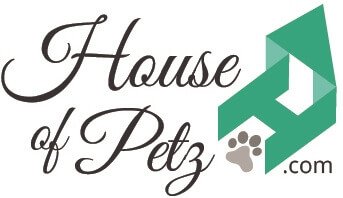Fatty acids are essential ingredients in your dog’s diet. Experts underline two types that are particularly important for your dog’s health. These are Omega-3 and Omega-6 fatty acids. At least, you need to ensure that the food you buy for your dog contains these acids. Dog food with omega fatty acids differs greatly from that which does not include them. This difference is directly manifested in the general health and other characteristics of your dog.
Best dog food with omega 3 and 6 fatty acids serve a number of functions such as promoting proper physiologic functioning, cell membrane structure as well as promoting cell function. Experts have affirmed that Omega 3 is essential during your dog’s gestation period and also in its early development stages. On the other hand, omega 6 is essentially necessary for normal growth, reproduction, immune system and healthy skin and coat.
With a basic understanding that Omega 3 dog food and Omega 6 dog food are immensely important in your dog’s daily diet, you need to ensure that your pup gets these Omega fatty acids in their full proportion, and most preferably, in plenty. While you are trying to get someone to write your essay find out how you to tell that your dog’s food contains fatty acids.
Should I tell fatty acid composition in my dog’s food by its label?
It is very likely that your dog’s food label may not contain exact names of omega 3 and omega 6 fatty acids. This does not mean the absence of these ingredients in your dog’s food. Other ingredients contained in the food may have these fatty acids. There are basic ingredients that involve these omega fatty acids. If their composition in your dog’s food is high, it is most likely that the level of omega 3 and omega 6 fatty acids is also high. Dog food with omega 3 differs depending on its specific fatty acid composition.
For instance, some types of dog food contain a higher composition of omega fatty acids than others. Omega 3 and omega 6 fatty acids are also contained in different ingredients. Below is a brief description of how you can examine dog food to tell if it involves any of the two types of omega fatty acids.
Dog Food Ingredients with Omega Fatty 3 Acids
Major food sources of Omega 3 fatty acids include fish oil or fish meal. Apart from them, if your dog’s food label includes ingredients such as salmon meal, salmon or trout, that is another indication that it contains omega 3 fatty acids. Buying such kind of food assures your dog of the benefits of omega 3 fatty acids. Other than these, products rich in EPA (Eicosapentaenoic acid) DHA (Docosahexaenoic acid).
Therefore, If you are specifically looking for dog food that contains Omega 3, simply look for these ingredients and their respective compositions. You will be able to tell how much components your pup is going to gain from his food.
Dog Food Ingredients with Omega Fatty 6 Acids
If you need dog food that contains Omega 6, here are the most important ingredients you should examine on the food label:
Vegetable oils listed in the food ingredients are the most important food ingredient containing Omega 6 fatty acids. Soybean and corn oil are known to be very rich in Omega 6. They should, therefore, attract your first attention. Another potential source of these acids includes animal fats. Depending on the exact ratio of these ingredients, Omega 6 will have a direct impact on your dog’s health.
Conclusion
To sum up, some both Omega 3 and Omega 6 fatty acids are necessary for the general health and well-being of your dog. They convey a number of benefits, some of which have been listed above. Determining the presence of the above two major types of fatty acids will enable you to make the right choice on the kind of food you give your dog.
Much as it is important to provide food containing plenty of fatty acids to your dog, it is also important to consult your dog’s vet or a nutritional specialist to find out the impacts of these fatty acids, the right amount to give your dog among other guidelines, all geared towards ensuring good health of your dog.

1 thought on “Ways to Tell if Your Dog’s Food Contains Fatty Acids”